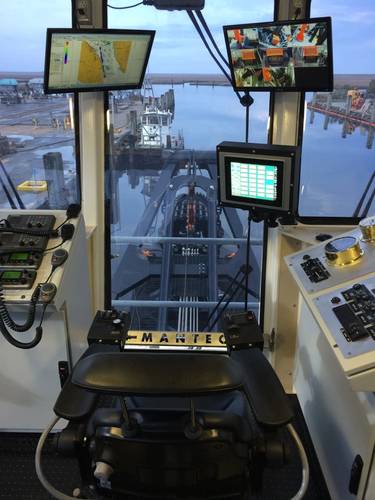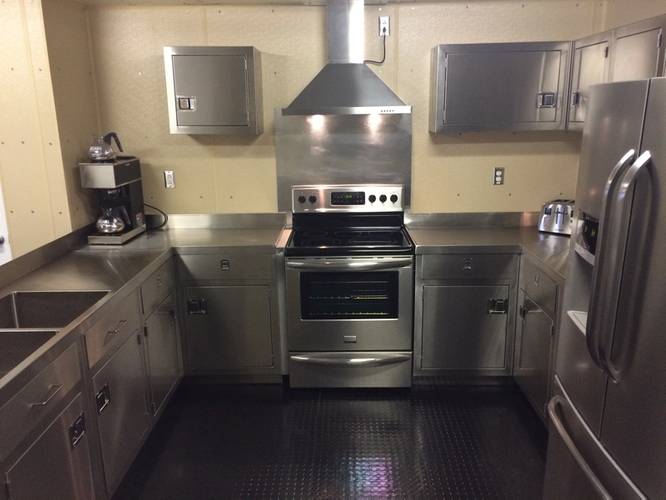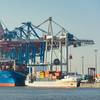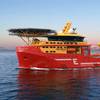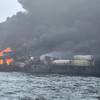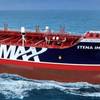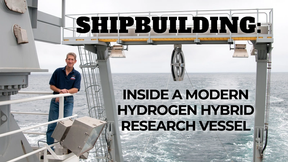The North Carolina Department of Transportation recently took delivery of a new, fully customized cutter suction dredge, which it christened the Dredge Manteo in a ceremony held April 28, 2016, at the at the NCDOT State Shipyard in Manns Harbor, N.C.. The 154-foot state-of-the-art pipeline dredge, designed and built by DSC Dredge, based in Reserve, La., will work to keep North Carolina’s state-maintained intercostal ferry channels clear, from the Cape Fear River near Wilmington to Currituck Sound near the North Carolina-Virginia state line. It will also maintain an emergency route between Stumpy Point and Rodanthe, south of Nags Head – the route used when North Carolina Highway 12 is out of service due to a storm or other event.
“The state of North Carolina anticipates that its ferry routes will see more and more use. It was imperative that the DOT has a more modern dredge that is capable of dredging more material more quickly than its predecessor,” said DSC Director of Sales Charles Johnson.
The Manteo – built to house two eight-person crews, with a full galley, four bunk rooms and two full bathrooms – will replace the Dredge Carolina, which was built in 1968. The dredge also features a 78-foot deckhouse that contains the machinery area, crew quarters and galley. Far more efficient than its predecessor, the 16” x 14” Manteo is capable of dredging a channel to a depth of 30 feet. Spud carriages, which the original dredge did not have, easily move the vessel as it works. At the outset of the engineering work, DSC’s designers made several recommendations to improve performance that NCDOT agreed upon. “We increased the horsepower of the engine and we increased the diameter of the impeller. This allows it to effectively move more material over a 1.5-mile distance to the discharge point,” noted Johnson.
Additional custom features designed to make the dredge more efficient include a GPD dredging system, an anemometer, fire and flooding alarm system, VHF radio, loud hailer and marine intercom system and a closed-circuit television system. The custom-designed lever room has tinted shades for vision protection and heat reduction. It is equipped with automation, including sensors to measure the amount of material dredged, and Hypac 3D imaging software to map the bottom of the waterway for more precise dredging. Data gathering and storing capabilities provide real-time reports for operations and maintenance. The dredge has its own password-protected website to which it uploads data. The website also allows DSC’s technical staff to log in for trouble-shooting and other technical support. “We wanted this dredge to be as self-sufficient as possible for the state of North Carolina,” Johnson said.
During its christening by North Carolina Gov. Pat McCrory and officials from the N.C. Department of Transportation Ferry Division, McCrory said, “We have remained focused on building and maintaining vital connections to jobs, education, health care and recreation.”
“Our state’s connections across the water are just as critical as our highways,” McCrory continued. “By ensuring that these waterways remain navigable, this new dredge is not only crucial for the mobility of this region, but also to its tourism industry, economy and continued ability to attract new opportunity.”
The dredge is named after Native American Croatan Manteo, chief of a local tribe that befriended and helped English explorers who landed at Roanoke Island in 1584. According to North Carolina Ferry Division Director Ed Goodwin, “Like its Croatan chief namesake, the Manteo will help North Carolinians navigate the rivers and sounds of eastern North Carolina safely and efficiently. It will be a vital component of the Ferry System for many years to come.”
Rather than bringing in out-of-state contractors to assemble the Manteo at the NCDOT State Shipyard, DSC chose to work with local contractors for welding, interior work, HVAC, vibration analysis and more. All onsite equipment was sourced from local rental houses.
The Manteo's first project is dredging for emergency route maintenance at Stumpy Point.







